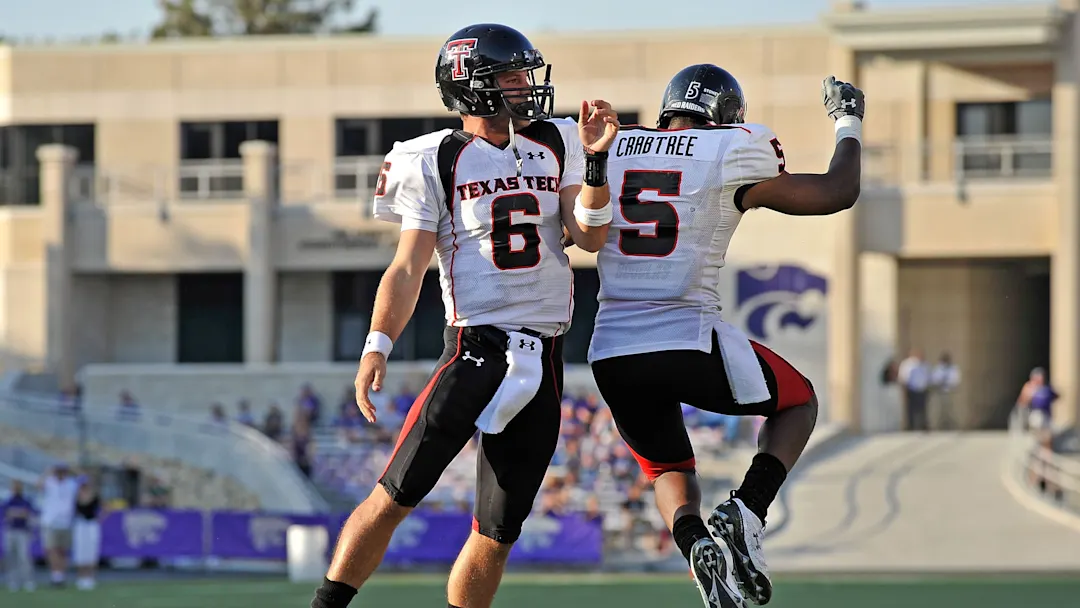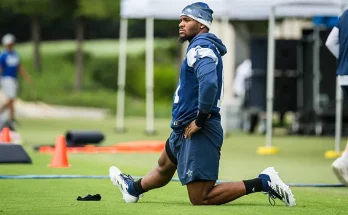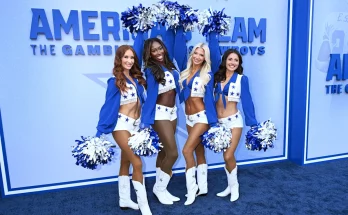Graham Harrell’s 2008 season marked the culmination of one of the most prolific quarterback careers in college football history, as the Texas Tech gunslinger delivered record-breaking numbers that etched his name into the NCAA record books and solidified his legacy as a Red Raider legend. Harrell’s senior campaign was not only statistically sensational but also culturally transformative for the Texas Tech program, helping elevate the school’s national profile and drawing the attention of football fans across the country.
Harrell entered the 2008 season already a household name among college football fans, known for his cannon arm, quick release, and mastery of Mike Leach’s Air Raid offense. After throwing for over 5,700 yards and 48 touchdowns in 2007, expectations were sky-high. But what Harrell accomplished in his final collegiate season went beyond stats—it was a masterclass in leadership, poise under pressure, and consistency at the quarterback position.
From the very first snap of the season, Harrell looked poised to dominate. Texas Tech opened with a string of non-conference matchups that allowed Harrell to rack up big numbers, throwing multiple touchdowns in each of the team’s early games. However, it was when Big 12 play began that Harrell’s true greatness emerged. He navigated the Red Raiders through a gauntlet of fierce opponents, showing resilience, creativity, and fearlessness week after week.
One of the defining moments of Harrell’s 2008 campaign—and arguably his entire career—came on November 1st, in a primetime showdown against the top-ranked Texas Longhorns. With ESPN’s College GameDay on site and the national spotlight burning bright in Lubbock, Harrell led the Red Raiders into one of the most anticipated games in school history. The contest was a back-and-forth battle that came down to the wire, and with eight seconds left on the clock, Harrell delivered a moment for the ages.
On the game’s final play, Harrell threw a pinpoint 28-yard strike to wide receiver Michael Crabtree, who caught the ball near the sideline, spun off a defender, and darted into the end zone for the game-winning touchdown. The Red Raiders pulled off a stunning 39–33 upset over the No. 1 team in the nation, sending the crowd at Jones AT\&T Stadium into an all-out frenzy. The play was instantly iconic and served as the signature moment of the Harrell era at Texas Tech.
The victory over Texas was more than just a thrilling win—it vaulted the Red Raiders into the national title conversation and pushed Harrell into serious Heisman Trophy contention. Though he ultimately didn’t take home the award, finishing fourth in voting, his name was mentioned alongside college football greats like Sam Bradford, Colt McCoy, and Tim Tebow. His performance that season put Texas Tech football on the map in a way it had never been before.
Harrell finished the 2008 season with 5,111 passing yards and 45 touchdowns to just nine interceptions. He led the NCAA in total offense and completions per game and became just the second quarterback in NCAA history to throw for over 5,000 yards in multiple seasons. By the end of his career, he had shattered numerous school, conference, and national records, including surpassing Ty Detmer to become the NCAA’s all-time leader in career touchdown passes at the time, with 134.
His accuracy, field vision, and command of the offense turned routine plays into explosive gains. While Harrell often spread the ball around, his connection with star receiver Michael Crabtree was electric. The duo formed one of the most formidable quarterback-receiver pairings in college football history, with Crabtree’s acrobatic catches and Harrell’s pinpoint passes making highlight reels weekly. Together, they redefined what was possible in the passing game.
But Harrell’s impact went beyond numbers. He helped change the perception of Texas Tech football. Before Harrell, the Red Raiders were seen as a respectable but mid-tier Big 12 program. After Harrell, they were viewed as a legitimate contender, capable of going toe-to-toe with the nation’s best. His cool demeanor, toughness, and football IQ inspired a new generation of quarterbacks and brought credibility to the Air Raid system that many traditionalists had once doubted.
In his final collegiate game, the 2009 Cotton Bowl Classic against Ole Miss, Harrell threw for 364 yards and four touchdowns. While Texas Tech fell short in a 47–34 loss, Harrell’s performance was a fitting capstone to his legendary career. He ended his college tenure with 15,793 passing yards—then the second-most in NCAA history—and a career completion percentage above 69%, further underscoring his elite accuracy.
After college, Harrell went undrafted in the 2009 NFL Draft, a surprising twist given his collegiate dominance. Critics pointed to the system he played in, concerns about arm strength, and questions about how his game would translate to the pros. He signed with the Cleveland Browns and later the Green Bay Packers, serving primarily as a backup and practice squad player. While his professional playing career didn’t mirror his collegiate success, his understanding of the game would prove valuable in his transition to coaching.
Indeed, Harrell would go on to carve out a promising coaching career, beginning as a quality control assistant under Mike Leach at Washington State and eventually becoming offensive coordinator at North Texas and USC. His coaching style, heavily influenced by the Air Raid philosophy he mastered at Texas Tech, brought explosive offenses to each of his stops and proved that his football mind was as sharp as ever.
For Red Raiders fans, however, Graham Harrell’s legacy will always be tied to the magical 2008 season—a year that saw Texas Tech reach as high as No. 2 in the national rankings and finish with an 11–2 record. It was a time of national relevance, unforgettable wins, and a belief that anything was possible when Harrell was under center.
Harrell’s place in Texas Tech lore is unquestioned. His jersey became one of the most popular in Lubbock, his name echoed across the Big 12, and his records became benchmarks for future quarterbacks to chase. Perhaps more importantly, Harrell inspired belief—among fans, teammates, and coaches—that Texas Tech could not only compete with college football’s elite but could beat them on the biggest stage.
His career serves as a testament to what can be achieved through preparation, vision, and unshakable confidence. Harrell didn’t possess the flashiest athletic traits, but what he did have—sharp decision-making, precision, and an unmatched understanding of the game—made him a giant in the college football world.
Today, as future Texas Tech quarterbacks take the field, they do so in the shadow of Graham Harrell’s towering achievements. His name remains a touchstone in Lubbock, a symbol of an era when the Red Raiders soared to historic heights on the strength of his right arm. Whether viewed through the lens of raw statistics or unforgettable moments, Graham Harrell’s 2008 season—and indeed his entire college career—stands as one of the most remarkable in the sport’s modern era.
And while his final snap in a Texas Tech uniform may be in the past, the legacy he built continues to inspire. In the annals of college football history, Graham Harrell’s 2008 campaign will forever be remembered not just for the records it set, but for the belief it instilled in a program and the magic it brought to a fan base that dared to dream.



